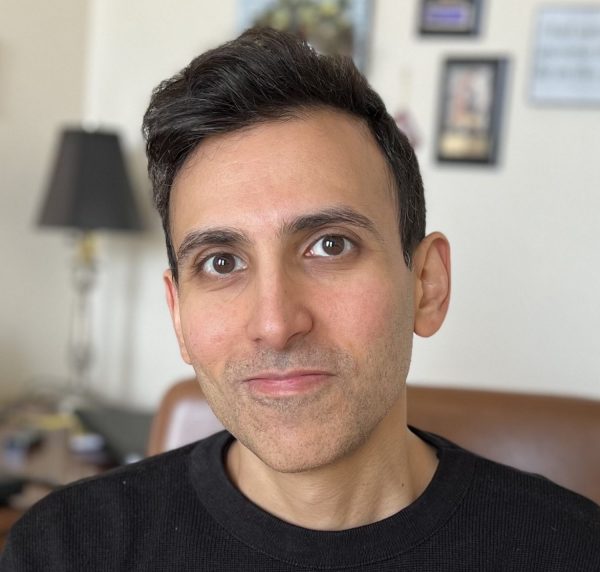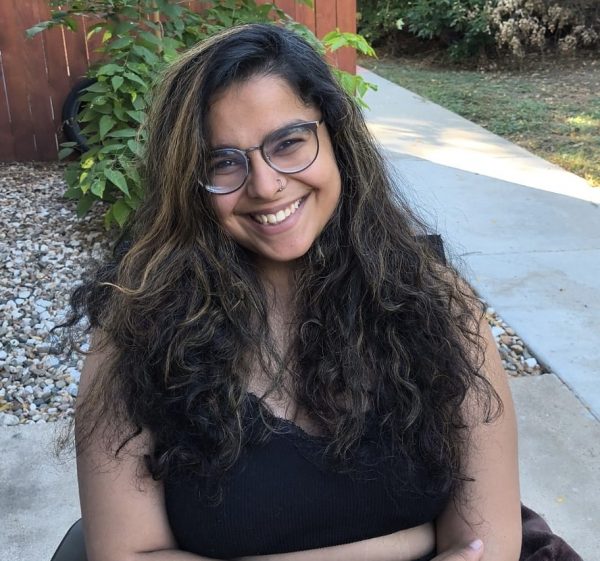Afsheen Farhadi discusses his story “On the Faces of Others,” featured in the Summer 2016 issue of Colorado Review, with editorial assistant Navya Sharma. Farhadi’s story “Omar in the Fog” was recently featured in the Summer 2024 issue.
 Afsheen Farhadi‘s short fiction and essays have appeared in Ploughshares, Conjunctions, The Southern Review, Colorado Review, Witness, The Rumpus, The Millions, Catapult, and elsewhere. He has a PhD in creative writing from the University of Cincinnati, where he was a Provost Graduate Fellow, and he currently serves as the inaugural Hughes Fellow in Creative Writing, Prose at Southern Methodist University.
Afsheen Farhadi‘s short fiction and essays have appeared in Ploughshares, Conjunctions, The Southern Review, Colorado Review, Witness, The Rumpus, The Millions, Catapult, and elsewhere. He has a PhD in creative writing from the University of Cincinnati, where he was a Provost Graduate Fellow, and he currently serves as the inaugural Hughes Fellow in Creative Writing, Prose at Southern Methodist University.
Navya Sharma: I recently read “On the Faces of Others,” and was moved by how raw the protagonist’s journey of exploring his place in the world around him was. Can you tell me how the story came about and what your writing process looked like?
Afsheen Farhadi: When I was in undergrad at Arizona State University, I was taking a workshop with Melissa Pritchard. She asked us to find a piece of news that we thought we could turn into fiction, the idea for which we’d submit as a class-wide contest. I found one about a truck in Budapest transporting five thousand rabbits. It hit another car, overturned, and all the rabbits spilled out on the road. My news article won the contest, but Pritchard made it clear that she didn’t like my idea. It was too silly—I think it had to do with Looney Tunes. She was totally right. But the news story about the truck really stuck with me. I don’t think there was even a picture to go along with it, but still that image of a road overrun with rabbits felt so alive to me. I kept it in my back pocket for a few years. I always imagined a man in a car stuck on that road. Then I finally realized that there would be a clean-up crew to clear the bunnies, thereby giving my protagonist people with whom to interact, not interact, or silently interact with. It was then that I began to find something thematically interesting about the scene, which morphed into another narrative thread where the main character waits in a Planned Parenthood where, similar to the bunny situation, he feels that people are making assumptions about him.
NS: It’s amazing to finally write a story that’s been ruminating for a couple years.
AF: It happens quite a bit to me! And it’s funny because you have these ideas, and they stick with you, but it feels like the story will never happen. But then some inspiration hits and two pieces just click together.
NS: Yes, absolutely! The story itself feels like it’s bridging gaps—between one’s reality and the reality of others when the two don’t align, when our reality holds more privilege than the ones we’re considering. This is disorienting at times, as it is for the narrator. The distance between his lived experience and that of his partner and the bunnies is vividly depicted—he almost fails to empathize with his girlfriend as she’s getting an implant, and he doesn’t help with the spilled bunnies. Could you speak more about developing this character, his perception of the world, and your experience writing about that distance?
AF: So much of our lives take place in the mind. There is something so dramatic about the life of the mind, about the unspoken, the unsaid, the unspeakable. I really wanted this character to have a dramatic distance between him and those around him. I wanted the tension to come from the fact that his actions and inactions, in both segments of the story, have the potential to be misinterpreted, which causes him great anxiety. Part of that anxiety has to do with masculinity, and in each context, it’s a completely different experience of masculinity. While the men are solving a problem and saving the day, he’s sitting in his car smoking, feeling emasculated by them. In the Planned Parenthood waiting room, he worries that he will be perceived as toxically masculine, wherein a narrative will be assigned to him. It was important for me to find the differences and similarities between these instances in order to create movement for the story.
Then there’s empathy—our abilities and failures to empathize. A bit like the description of the static he’s listening to on the radio, wherein he feels that all the threads of conversation and discourse are combining to form an almost abrasive sound.
NS: It was a killer line.
AF: Thank you! I feel like to some degree it represented the threads of his self-identity and its various sources: the bunnies, his girlfriend, the men involved in the clean-up, those in the waiting room. These various images and opinions of him come together to construct an abrasive sense of self.
NS: Trapped by a herd of bunnies or sitting alone in the waiting room of the Planned Parenthood, the narrator experiences this sense of stillness juxtaposed with movement all around him—this abrasive experience. That is really fascinating.
AF: That was a challenge for me. How do you make a story interesting and dramatic when so much of it is still? I thought a lot about the tension between actively contributing to the well-being of a community versus actively taking care of yourself, particularly when those two things are in conflict with each other. Obviously, there are situations where that decision is easier, but for the most part, there aren’t any rules—you make those decisions as the situations arise. What’s interesting to me is that those decisions are self-defining, almost as if they’re ingredients that cook up a worldview. He’s an aware narrator, perceptive of both himself and others. But even so, he’s not protected from the discomfort of being misunderstood, having to suffer through the consequences and interpretations or misinterpretations of his choices, as well as the way those interpretations define him in ways he isn’t comfortable with.
NS: Having to reflect on those choices, the main character is engaged in the process of memory-making to reach a truth about his feelings. There is something radical about accountability when it comes to memory. Could you speak a bit about the role memory-making plays in your writing?
AF: Usually, memory in fiction comes in the form of a backstory that helps us understand the character in the present. With this story, based almost exclusively on retrospection, the character is remembering from a point that is invisible to the reader. I still feel that the real story is in the present, a time wherein memories are speaking to what the narrator is experiencing. The way he connects the two—past and present—is a clue as to what’s he’s going through. We are, of course, built of our experiences. But at certain points of joy, crisis, tumult, we reflect on our experiences in a very specific way, creating a narrative of our experiences that helps us understand the challenges of our present. There’s a school of thought where stories about thinking and remembering can be quite boring. But the act of memory-making itself is very emotional and dramatic. Part of my impetus for this story was to show how the act of remembering, the act of assembling a self based on memory, is something we always do. And that it is meaningful to our lives.
NS: It is quite a consistent process. As you said earlier, the character’s strife is also about his individualistic values colliding with communal values. He feels a striking degree of guilt as a result. I find myself feeling the same way at times. So much of our memory-making engages with that.
AF: I agree. Generally, I live under the assumption that it’s both easier and less rewarding to be alone than a part of a community. Being a part of a community— a social circle, a marriage, or a family—requires you to relinquish some determinacy in terms of your own identity. When someone misunderstands you on account of a mistake, maybe you cut someone off in traffic and they make it clear they’re unhappy about it, that judgement changes, even if temporarily, your determination of yourself. For this story, I was interested in exploring a character who struggles with just that, a connection to others to his community. He is looking inward to find an answer, and what he finds inward are these two particular memories. In general, I have a soft spot for characters who are lonely in some way, as we all are at times. And I think a person who feels lonely is often undergoing an infernal process that is really quite dramatic.
 Navya Sharma is an MFA candidate in fiction at Colorado State University, where she serves as an editorial assistant for Colorado Review.
Navya Sharma is an MFA candidate in fiction at Colorado State University, where she serves as an editorial assistant for Colorado Review.